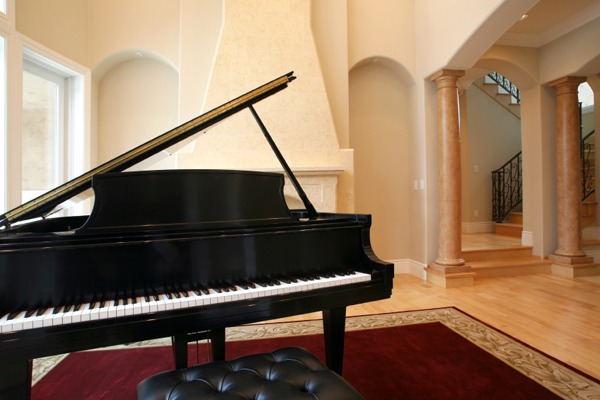A “Moving” Performance: Packing and Moving a Piano
Piano moving is one of the most complex types of relocations you’ll ever experience. The best option is to hire experienced piano moves to do the job. But if you have to do it yourself, forewarned is forearmed. Here are some tips from the experts to make sure your piano move is safe and effective – for both you, the mover, and for the instrument you love.
Be prepared
Whether you’re moving the piano yourself or using a piano moving company, it’s best to conduct some pre-move measures. For example, know the actual weight of your piano (standard uprights are usually 350 pounds) to better determine how many movers will be needed. Be sure to arrange for a four-wheel piano dolly that can handle the weight of the instrument and a moving vehicle with a lift gate or pull-out ramp.
Packing your piano
Securely wrap your piano in a blanket to protect it from nicks and scratches. To prevent someone from tripping or the piano from getting snagged, do not cover the lower parts of the piano.
Moving your piano
This is tricky, simply because of the weight and heft of the instrument. To make sure you move the piano safely and effectively, follow these tips:
- Remember the piano dolly? See to it that its wheels move perfectly without getting stuck. This is critical both before and after you put the piano on the dolly.
- Start the moving process by inserting a blanket under one side of the piano, and then having your movers lift it up on the other side. Position the dolly in the center of the piano right under the pedals. The goal is to balance the piano on the dolly before you start moving.
- Take a tip from the experts and provide makeshift ramps (out of plywood) so the piano moves smoothly on stairs or uneven surfaces.
- If your moving truck does not have a lift, make sure you have enough people to push the piano onto the ramp and up the moving truck.
- Use the same procedure for getting the piano onto the dolly…to get it OFF the dolly once the piano is inside the truck.
- Upon reaching your new location, get the piano off the truck using the techniques for getting it onto the truck. Make sure you also have makeshift ramps to use on stairs or uneven surfaces on the way to your new location.
Securing your piano in transit
A lot can happen between the time you get your piano into the moving truck – and then get it out of the vehicle into its new location. To make sure you transport the piano in one piece and get beautiful music out of it long after the move, follow these suggestions:
- Put the wrapped piano on a piano dolly with four swivelling casters. Tie the piano securely to the dolly so it does not tip to the sides or roll off while you’re getting it into the moving truck. Try to get a truck with a lift gate. if you can’t, be extra careful when lifting the
- piano.
- Moving a small-size piano? Take care that its legs are not burdened with too much weight if you’re rolling it without a dolly. They could break off.
- Securing the piano while in the truck is critical. Tie it down securely with ropes or straps, using pads or fabric under the ropes/straps to protect the piano’s finish. Secure any moving internal piano parts as well. The goal is to make sure the instrument does not move while in transit.
- Check the piano once in awhile during the trip, especially if it’s travelling a long distance.
- Once you and your piani are moved to your new location, give it several weeks to get used to its new environment before tuning it.



